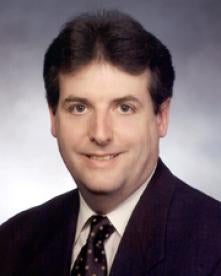Oaths or Declarations
Effective September 16, 2012, the inventor’s oath or declaration must include the following three statements: (1) the person executing the oath or declaration believes the named inventor or joint inventor to be the original inventor or an original inventor of a claimed invention in the application for which the oath or declaration is being submitted; (2) the application was made or was authorized to be made by the person executing the oath or declaration; and (3) any willful false statement made in the declaration is punishable under 18 U.S.C. § 1001 by fine or imprisonment of not more than five years, or both. The final rules no longer require the inventor to include the “without deceptive intention” statement in the declaration. Although, the inventors still have a duty to disclose relevant information under 37 C.F.R. § 1.56, it is no longer necessary for the inventors to acknowledge this duty in the declaration. In addition, under the final rules, the inventors do not have to acknowledge the claim for domestic or foreign priority in the declaration. However, to claim priority to or benefit of a prior-filed application under 35 U.S.C. §§ 119, 120, 121, or 365, the claim must be made in an Application Data Sheet (ADS).
Under the final rules, the U.S. Patent and Trademark Office (USPTO) will issue patents to the applicant, who may be someone other than the inventor, such as assignee, but the inventors names will still be on the face of the patent. If an inventor is unable or unwilling to sign an oath or declaration, an applicant may file a substitute statement in lieu of an oath or declaration stating the reason why the inventor did not execute the oath or declaration. A petition accompanied with evidence showing that the applicant exercised diligence in trying to procure the inventor’s signature is no longer required, although applicant is still required to use diligent effort to obtain the inventor’s signature.
The new wording is required in declarations for all new applications, continuations, and divisional applications filed after September 15, 2012, except National Phase Applications filed under 35 U.S.C. § 371 (’371 Applications) claiming priority to an International Application filed before September 16, 2012. Declarations for ’371 Applications claiming priority to an International Application filed prior to September 16, 2012 must use the previously required declaration wording.
In the discussion accompanying the final rules, the USPTO discouraged the use of a combined declaration/power of attorney and encouraged the use of a combined declaration/assignment. The USPTO has examples of a new declaration form on its website. The USPTO, however, will not provide forms with combined declaration and power of attorney or combined declaration and assignment.
Derivation Proceedings
Derivation proceedings essentially replace interference proceedings for patents and applications filed on or after March 16, 2013. Derivation, unlike interference, is limited to situations in which a petitioner can show that the earlier filed application was derived from the petitioner’s invention.
Under the final rules, an inventor seeking a derivation proceeding must file a patent application. The inventor, however, may copy the alleged deriver’s application, making any changes necessary to reflect accurately what the inventor invented. A petition for a derivation proceeding must be supported by substantial evidence that the earlier filer derived the invention from the petitioner and the petitioner did not authorize the earlier filing. The petitioner has to show why the petitioner’s claim is patentably indistinct from the earlier-filed claim and identify how each claim at issue is to be construed. If the construed claim is a means-plus-function or step-plus-function claim, the portions of the specification that describe the structure must be identified. The petition must be filed within a year of the first publication of a claim to the same or substantially the same invention as that of the petitioner. The first publication includes a World Intellectual Property Organization publication of an international application designating the United States.
As explained in the discussion of the final rules, a derivation proceeding would be conducted before the Patent Trial and Appeal Board in a manner similar to inter partes review and post grant review. In accordance with the final rules, the parties to a derivation may terminate the proceeding by filing a written statement reflecting the agreement of the parties as to the correct inventors of the claimed invention unless the Board finds the agreement inconsistent with the evidence of record. The final rules also provide that the parties to a derivation proceeding may agree to arbitration to settle the dispute, except nothing shall preclude the UPSTO from determining the patentability of the claimed inventions involved in the proceedings.
Setting and Adjusting Patent Fees
The USPTO issued proposed changes in patent prosecution fees in accordance with the authority granted to the USPTO under section 10 of the America Invents Act (AIA). The proposed rules include the micro entity fees set at 25 percent of the large entity fees, as authorized by the AIA. The USPTO explained that the proposed fee schedule would recover the aggregate estimated costs of the USPTO while achieving strategic and operational goals, such as implementing a sustainable funding model, reducing the current patent application backlog, decreasing patent pendency, improving patent quality, and updating the patent IT business capability and infrastructure.
Some of the proposed fees are set at levels to recover USPTO costs, while others are set below cost recovery and others, such as maintenance and issue fees, are set above cost recovery.
Some notable proposed fees include increasing the combined basic filing fee, search and examination fee to $1,600; first RCE to $1,200; second and subsequent RCE to $1,700. The 3.5 year, 7.5 year and 11.5 year maintenance fees would be increased to $1,600, $3,600 and $7,400, respectively. Further, each independent claim in excess of three would cost $420, each dependent claim in excess of 20 would be $80, and the multiple dependent claim fee would be $780. In addition, extension of time fees would rise to $200 (one month), $600 (two months), $1,400 (three months), $2,200 (four months) and $3,000 (five months). On the other hand, fees would be lowered for prioritized examination ($4,000), combined publication/issue fee ($960); ex parte reexamination ($15,000) and combined supplemental examination/reexamination ($18,000). The proposed small entity and micro entity fees would be one-half and one-quarter of the above fees, respectively.
The USPTO proposed new schemes for charging fees for appeals, inter partes review, post grant review and assignments. Under the proposed rules, the fee for filing a notice of appeal would increase to $1,000 and there would be no fee for filing an appeal brief, but the USPTO would charge $2,000 once the appeal is forwarded to the Board. In an inter partes review, the proposed fee would be $9,000 for filing a request for review of up to 20 claims and $200 for each additional claim, and if inter partes review was granted there would be an additional fee of $14,000 for up to 15 claims and $400 for each claim over 15. In a similar manner, the fee for requesting post grant review would be $12,000 for requesting review of up to 20 claims, and if post grant review is granted an additional fee of $18,000 for review of up to 15 claims and $550 for each claim in excess of 15. Finally, while the fee for recordation of assignments would remain at $40, there will be no recordation fee charged to applicants who electronically record assignments.
Comments on the proposed fees should be emailed to fee.setting@uspto.gov by November 4, 2012. A complete listing of the proposed fees can be found in the Notice of Proposed Rulemaking at http://www.uspto.gov/aia_implementation/Proposed_Fee_Schedule.pdf.




 i
i

